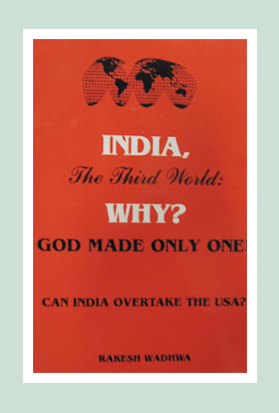Free Markets and Liberty
Free markets of the modern world can be credited with inspiring economies towards redemption. And why not, when economists the world over testify it to be the best trade policy available. Instead of letting the authorities bar free resource use by autocratic taxation and stringent intervention in trade, deploying free trade can help solve many conundrums concerning trade and economy today. Free markets are profitable only because choices regarding investment, production and allocation are determined by the market, and not authorities.
Flourishing Free Trade Economies
Singapore is a wonderful case in point when it comes to looking at how free markets have let economies progress and surpass the limitations of state-regulated arrangements. Said to be the ideal economy, Singapore has benefited from a liberal attitude of trade to become the world’s most open, least corrupt, most pro-business, and one of the highest per capita gross domestic products economy in the world.
Having separated from Malaysia in 1965, the nation saw through a dismal economic depression that beggared a majority of its population. Eventually, the government discovered that liberating the market was the ideal way forward, and adopted a much lenient, meritocratic system of economy. With 700 ships in ports at all times and more than 600 shipping lines with links to more than 800 international ports, Singapore is an ideal example of a successful economy despite its scarce natural resources. Also, almost all imports entering are duty free. Ditto for exports, with no controls on foreign exchange, and no protectionist measures.
Free trade promotes liberalization in the registry of property, protection of investors, amenability in trade and credit. Rwanda is another testimony to the boon that free trade is. A small, landlocked country in the African continent, Rwanda has seen unprecedented leaps in GDP and economic expansion. By liberalizing two of its vital exports, coffee and tea, the government has allowed producers to gain greatly from an export boom, improving incomes and boosting productivity via capital investments. Under a new scheme called Rwanda Vision 2020, assets are to be privatized to help reduce the prices of goods and services, and attract foreign investors. This is expected to widen supplies as well.
Latin America’s miracle, Chile, is one of the most successful economies in the continent. Ranked as a high income economy by the World Bank, Chile has grown from being a stagnant communist model to lead Latin American nations in human development, competitiveness, income per capita and other scales of development. The most important reform this economy banks on is its system of privatized pension system, which checks escalating taxations on income. Having signed free trade agreements with Canada, Mexico, and Central America, Chile maintains healthy trade collaboration with neighboring countries. Apart from these, the government is active to identify new sectors with potential, and introduce tax reforms, letting additional FDI enter the economy.
Modern free markets are arrangements granting the ultimate autonomy to the citizens. Although it is impractical to wish for a zero state intervention policy, the state here intervenes only for tax collection, enforcement of contracts and private ownership. Many economies in the world have experienced enormous improvements in overall GDP and other economic parameters. The reason for the well being of these economies is that their economic policy of free trade limits no one and the citizens are the sole decision-makers.
If you are wondering about the functioning of free markets, you can read my blog on How the Free Market Works.

 Rakesh Wadhwa. Ever since, I was a school boy, I knew India was on the wrong path. Socialism was just not what we needed to get ahead. Government controlled our travel; government controlled our ability to buy and sell; and government controlled our freedom to move our money. My life has focused on the inherent rights people have. When I was in college, I never understood, what the governments meant by their "socialistic attitude". If people are free to buy, sell and move their capital themselves without any restrictions by state, then the welfare of people is inevitable & hence the countries they live in will become wealthy. The government has no right whatsoever, to point a finger at me or my business. I am not a revolutionary. I just want to light up my cigarette and not get nagged about it. I believe in non-interfering attitude to attain more.
Rakesh Wadhwa. Ever since, I was a school boy, I knew India was on the wrong path. Socialism was just not what we needed to get ahead. Government controlled our travel; government controlled our ability to buy and sell; and government controlled our freedom to move our money. My life has focused on the inherent rights people have. When I was in college, I never understood, what the governments meant by their "socialistic attitude". If people are free to buy, sell and move their capital themselves without any restrictions by state, then the welfare of people is inevitable & hence the countries they live in will become wealthy. The government has no right whatsoever, to point a finger at me or my business. I am not a revolutionary. I just want to light up my cigarette and not get nagged about it. I believe in non-interfering attitude to attain more. 
 The Bastiat Award is a journalism award, given annually by the International Policy Network, London. Bastiat Prize entries are judged on intellectual content, the persuasiveness of the language used and the type of publication in which they appear. Rakesh Wadhwa won the 3rd prize (a cash award of $1,000 and a candlestick), in 2006.
The Bastiat Award is a journalism award, given annually by the International Policy Network, London. Bastiat Prize entries are judged on intellectual content, the persuasiveness of the language used and the type of publication in which they appear. Rakesh Wadhwa won the 3rd prize (a cash award of $1,000 and a candlestick), in 2006.
1 Comment
How the Free Market Works | Rakesh Wadhhwa
August 7, 2013[…] In my next blog, I will be writing about the flourishing free trade economies and liberal trade policies. Read my blog on Free Markets and Liberty. […]